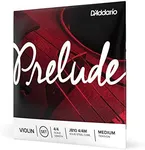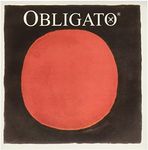Buying Guide for the Best Violin Strings
Choosing the right violin strings is crucial for both the sound quality and playability of your instrument. The strings you select can significantly affect the tone, response, and overall feel of your violin. When selecting strings, consider your playing style, the type of music you play, and the characteristics of your violin. It's important to experiment with different strings to find the best match for your needs and preferences.MaterialViolin strings are typically made from gut, synthetic, or steel. Gut strings, made from sheep intestines, offer a warm, rich tone and are favored in baroque and classical music. However, they are sensitive to temperature and humidity changes. Synthetic strings mimic the sound of gut but are more stable and durable, making them a popular choice for many players. Steel strings provide a bright, focused sound and are often used in folk and jazz music. Consider the type of music you play and the sound you desire when choosing the material.
Gauge (Thickness)The gauge of a string refers to its thickness, which affects the tension and sound. Thicker strings (heavy gauge) produce a louder, fuller sound but require more finger pressure and can be harder to play. Thinner strings (light gauge) are easier to play and produce a softer, more delicate sound. Medium gauge strings offer a balance between the two. Beginners might prefer medium or light gauge for ease of play, while more experienced players might choose based on their desired sound and playing style.
TensionString tension affects the playability and sound of the violin. High tension strings produce a louder, more powerful sound but can be harder to play and may put more stress on the instrument. Low tension strings are easier to play and produce a softer sound. Medium tension strings offer a balance and are a good starting point for most players. Consider your playing comfort and the sound you want to achieve when selecting string tension.
ToneThe tone of a string is the quality of sound it produces. Some strings offer a warm, mellow tone, while others provide a bright, clear sound. The tone is influenced by the material, gauge, and tension of the string. Think about the type of music you play and the sound you want to achieve. If you play classical music, you might prefer a warm tone, while a bright tone might be more suitable for folk or jazz.
DurabilityDurability refers to how long the strings last before they need to be replaced. Gut strings are less durable and require more frequent replacement, while synthetic and steel strings tend to last longer. If you play frequently or perform regularly, you might prioritize durability to avoid frequent string changes. However, if you are experimenting with different sounds, you might be willing to change strings more often.















